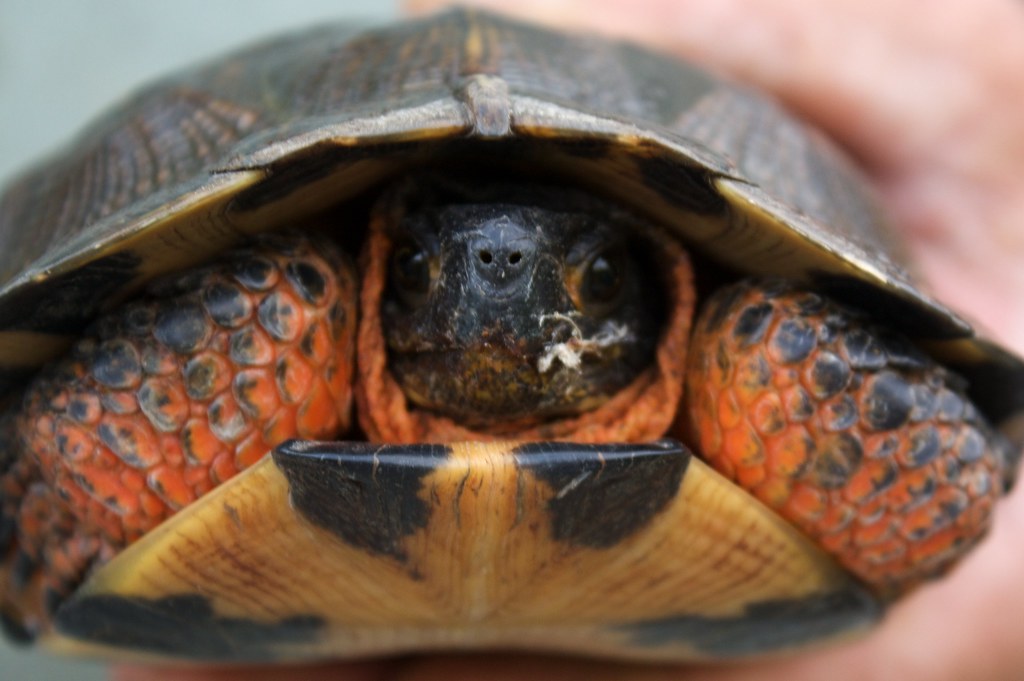 As I was driving on New Hampshire Route 114, I saw this turtle on the double yellow line slowly walking to the other side of the road. I stopped, stopped the other car or two that came by, and put her on the passenger floor of my car. The other people asked if she was OK, and she was. They said they knew where to put her, but so did I. What better place than home with three ponds, far from the road, abundant food and no interference? They agreed.
As I was driving on New Hampshire Route 114, I saw this turtle on the double yellow line slowly walking to the other side of the road. I stopped, stopped the other car or two that came by, and put her on the passenger floor of my car. The other people asked if she was OK, and she was. They said they knew where to put her, but so did I. What better place than home with three ponds, far from the road, abundant food and no interference? They agreed.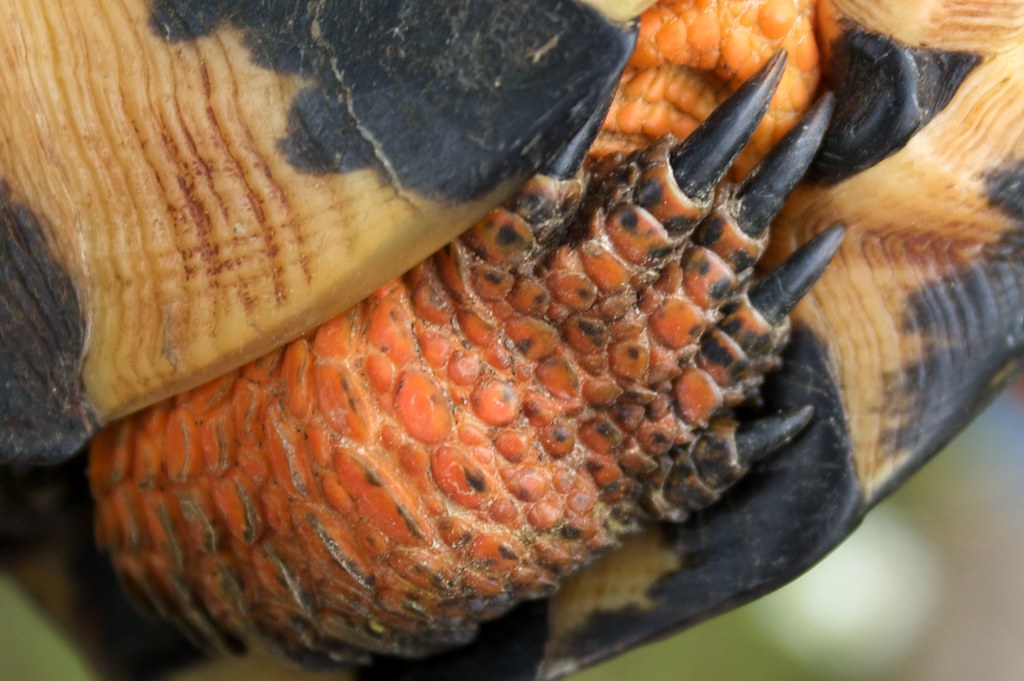 John and I put her in the clover in the back of the house and she quickly lifted her head and smelled water near by. We checked her out all over — not only to see if she was hurt, but to learn about wood turtles and identifying them. She is beautiful and her feet are fascinating and strong.
John and I put her in the clover in the back of the house and she quickly lifted her head and smelled water near by. We checked her out all over — not only to see if she was hurt, but to learn about wood turtles and identifying them. She is beautiful and her feet are fascinating and strong. Above: John found that she had been hit by a car and was bleeding from a spot where her shell was broken. He says she will be OK and will survive.
Above: John found that she had been hit by a car and was bleeding from a spot where her shell was broken. He says she will be OK and will survive.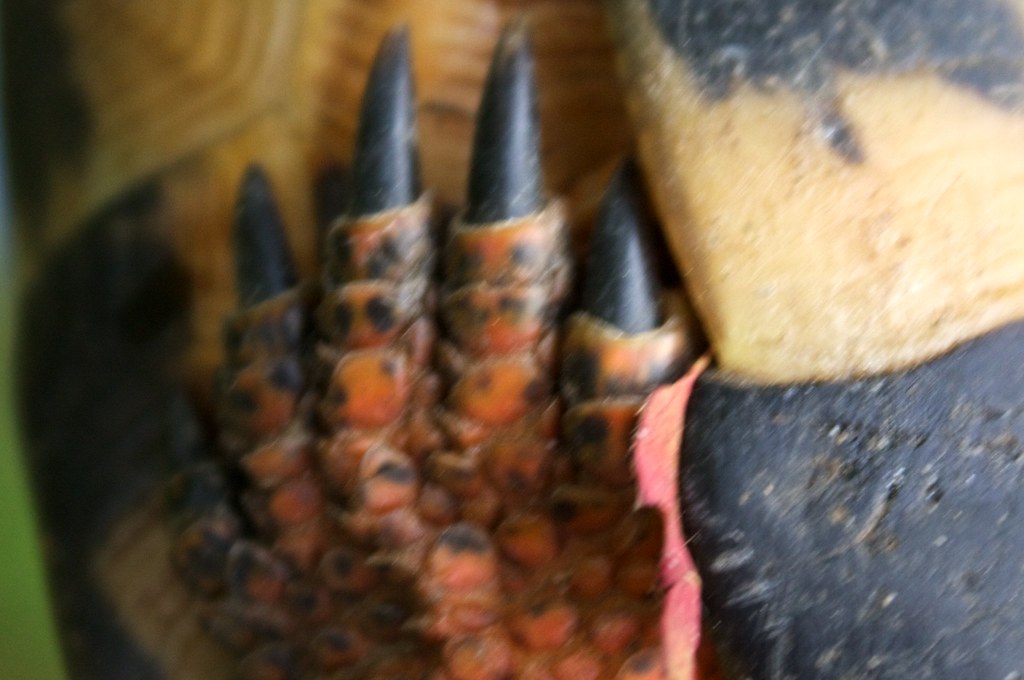


 John carried her to the first pond, the most remote pond and placed her on the sandy beach near where reeds grow. I watched her as her head came out of her shell and she surveyed the area. Then she quickly walked to the water and slid in and disappeared. I look forward to watching her in the days and months ahead.
John carried her to the first pond, the most remote pond and placed her on the sandy beach near where reeds grow. I watched her as her head came out of her shell and she surveyed the area. Then she quickly walked to the water and slid in and disappeared. I look forward to watching her in the days and months ahead.
NH Conservation Status: Species of Special Concern, Wildlife Action Plan Species in Greatest Need of Conservation. Legally protected in New Hampshire: possession, sale, import, and take (harm, harass, injuring, killing) is illegal.
State Rank Status: Vulnerable to extirpation and extinction
Distribution: Throughout NH except regions of high elevation.
Description: A 5-8 inch turtle characterized by its highly sculpted shell where each large scute takes an irregular pyramidal shape. The neck and forelimbs are orange.
Commonly Confused Species: Juvenile snapping turtles.
Habitat: Found in slow-moving streams and channels with sandy bottoms. Extensive use of terrestrial habitats during summer, including floodplains, meadows, woodlands, fields, as well as wetlands.
Life History: Lay 4-12 eggs in shallow depressions in sandy, well-drained soils. Nest sites are usually near streams but may also be in clearings, agricultural fields, or other disturbed areas. Hibernate in slow-moving streams and rivers under riverbanks, root masses, or woody debris.
Conservation Threats: Road mortality, Habitat loss and fragmentation, stream alteration, human collection, and increased abundance of subsidized predators.
State Rank Status: Vulnerable to extirpation and extinction
Distribution: Throughout NH except regions of high elevation.
Description: A 5-8 inch turtle characterized by its highly sculpted shell where each large scute takes an irregular pyramidal shape. The neck and forelimbs are orange.
Commonly Confused Species: Juvenile snapping turtles.
Habitat: Found in slow-moving streams and channels with sandy bottoms. Extensive use of terrestrial habitats during summer, including floodplains, meadows, woodlands, fields, as well as wetlands.
Life History: Lay 4-12 eggs in shallow depressions in sandy, well-drained soils. Nest sites are usually near streams but may also be in clearings, agricultural fields, or other disturbed areas. Hibernate in slow-moving streams and rivers under riverbanks, root masses, or woody debris.
Conservation Threats: Road mortality, Habitat loss and fragmentation, stream alteration, human collection, and increased abundance of subsidized predators.
 Wood Turtle Set
Wood Turtle Set_/\_/\_
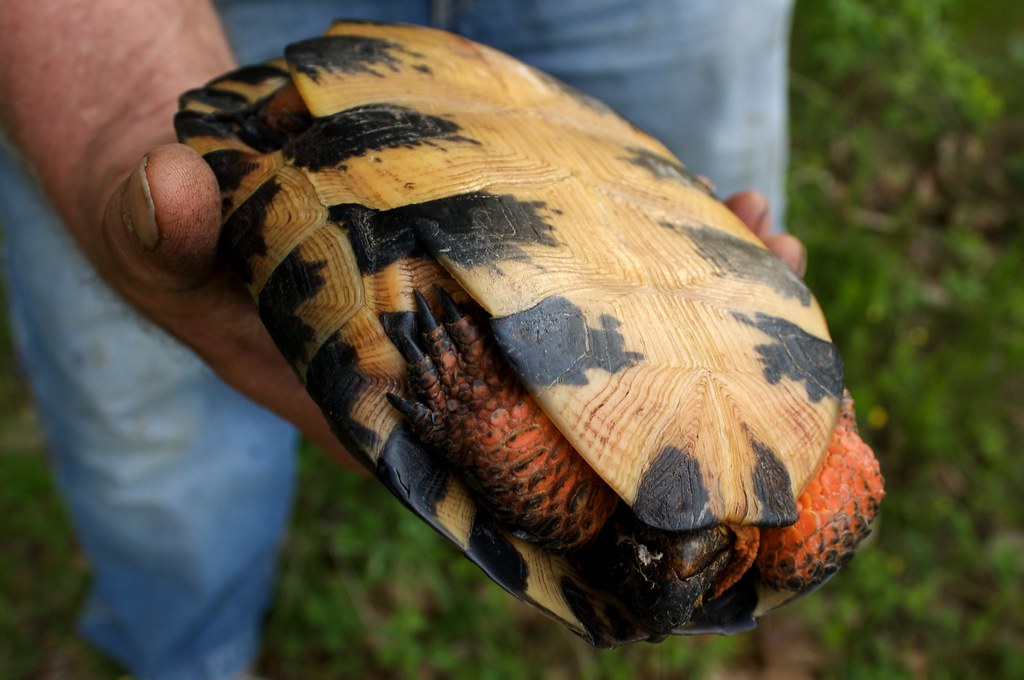
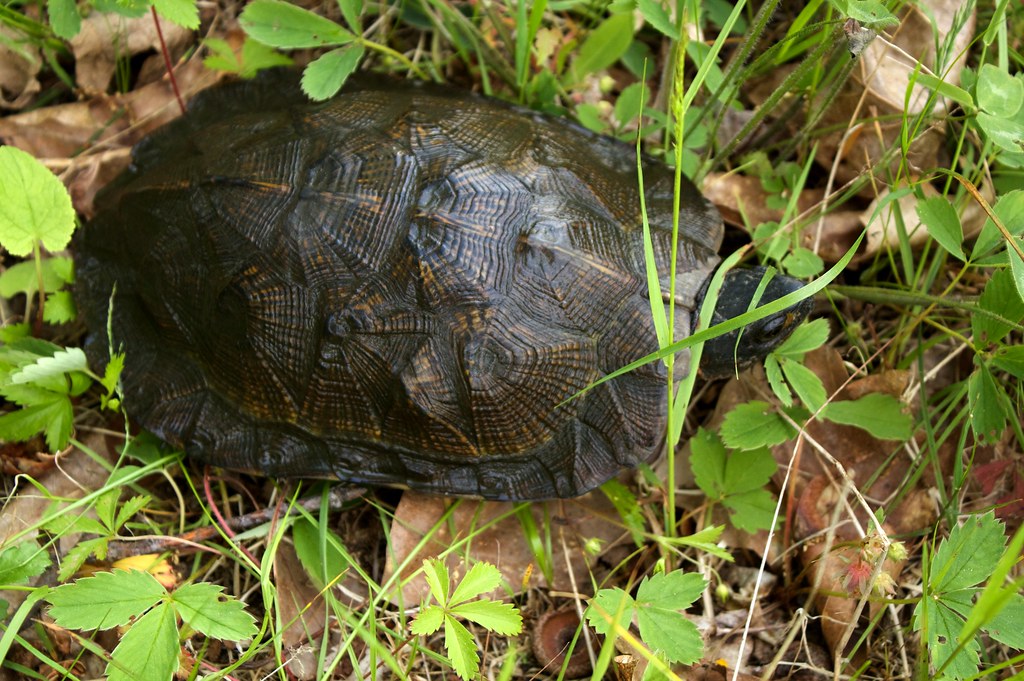
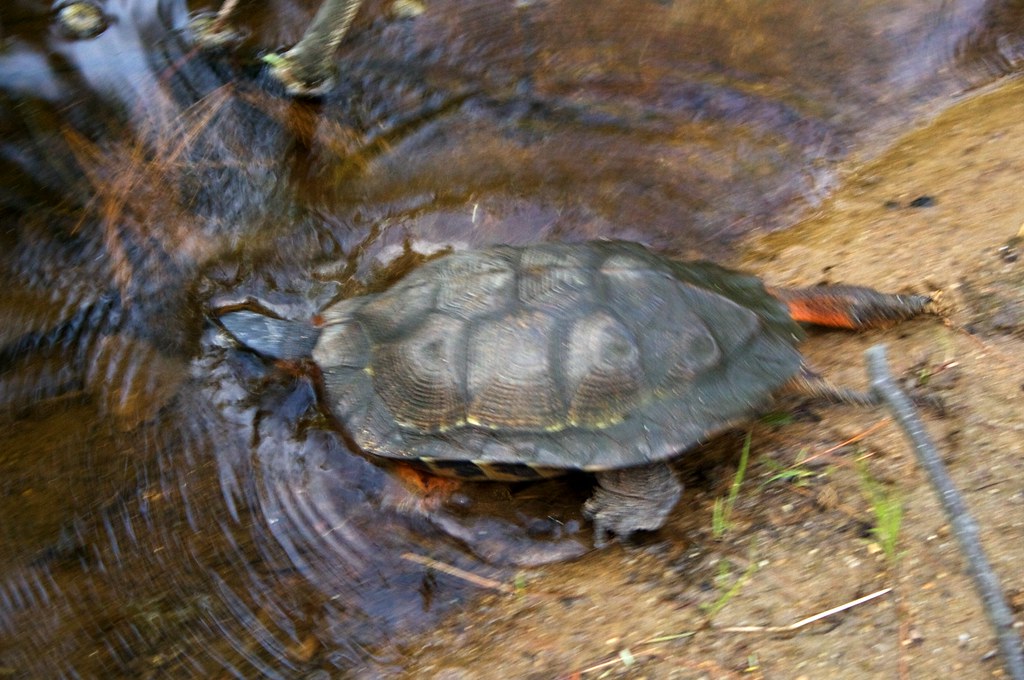
Such great macro shots and a good rescue story. Well done.
ReplyDeleteAny further sightings of your Wood Turtle after you released her?
ReplyDeleteNo, Port, and I checked all summer. Then I realized that she is a wood turtle and goes back to the woods after egg-laying. So hopefully we will see her in the spring! Thank you for visiting.
ReplyDeleteOh this poor turtle. They live in streams not ponds and they have a homing instinct so that turtle will attempt to get back to where it came from, and such an event will lead it across many roads. Doh!
ReplyDelete